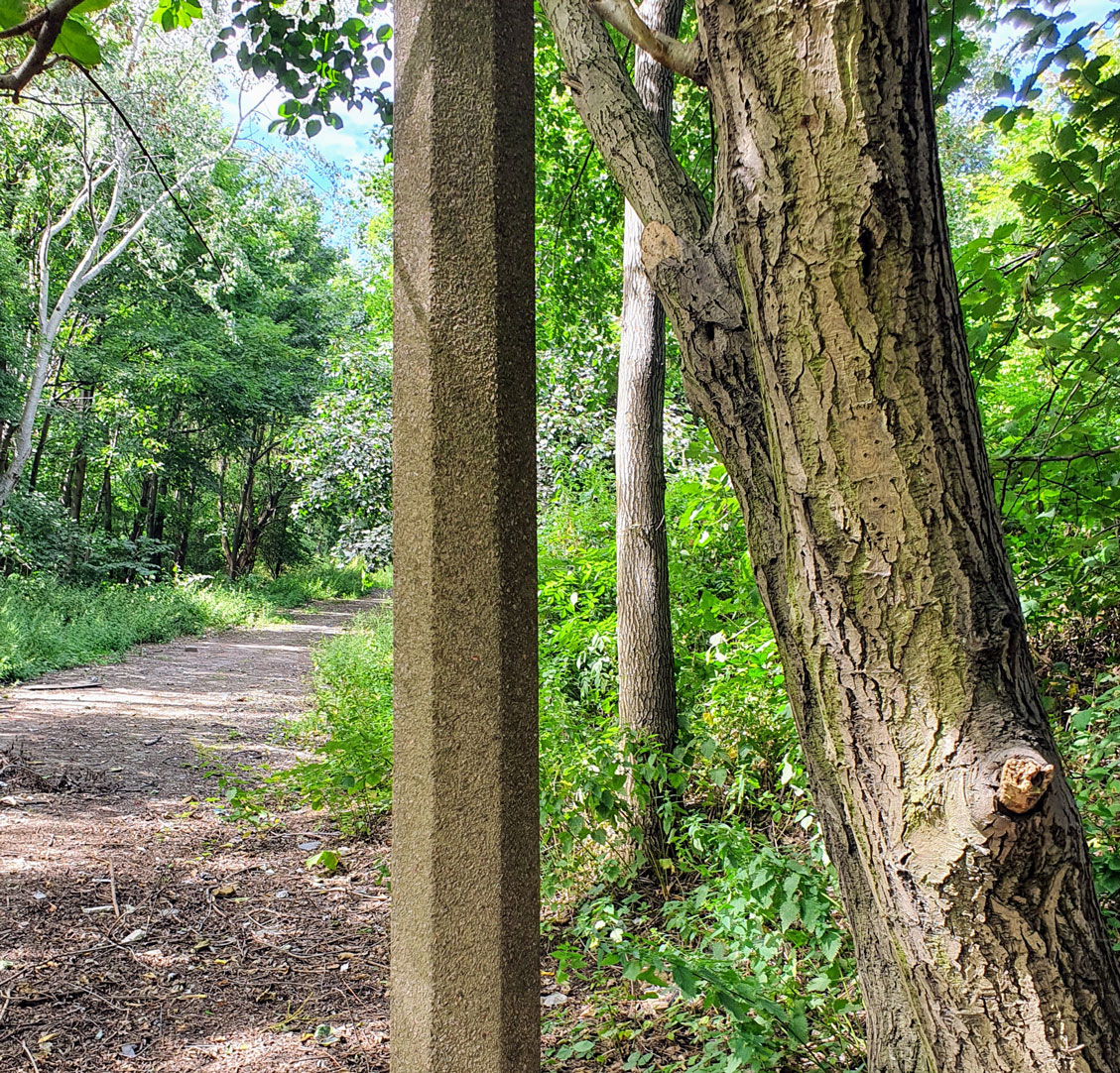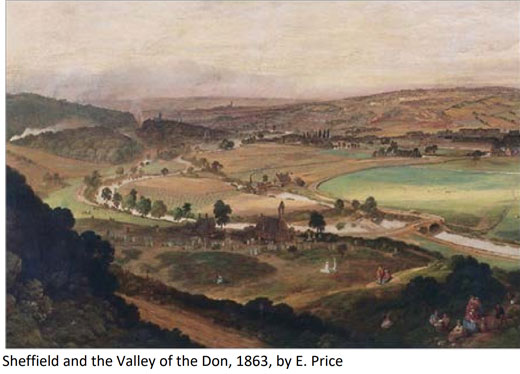What Must We Dream Of?
This project was a collaboration between Dr Amanda Crawley Jackson from Sheffield University and Patrick Murphy and Anton Want for the Festival of the Mind 2020.
The exhibition for Festival of the Mind 2020 took us on a journey through Neepsend and Parkwood Springs in Sheffield. Both locations are scarred by industrialisation, deindustrialisation, slum clearance and war.
The project began when both artists embarked on a series of walks with Dr Amanda Crawley Jackson (School of Languages and Cultures), whose research explores post-traumatic landscapes in literature and the visual arts.

Image shows Wallace Road overgrown by trees. Cobble streets and lamp posts still visible. © Patrick Murphy
Patrick says, ‘The landscape I encountered was fascinating, it shows a resilience against formal municipal planning. It’s evolution as been shaped over the last 200 years, fuelled by the rise and fall of past industry and shifting fortunes. The marks left on this landscape are like the marks you find on a workbench grooves, dents and holes all left behind in the process of making or disposal of things.’
But by contrast Old Park Wood and Parkwood Springs had been the site of a deer park, hunting ground and ancient woodland belonging to the Duke of Norfolk’s estate. But slowly this place became industrialised, the coppiced woodland became fuel for the iron works in the valley below. Which began a process of total change for the area.

By 1845 the building of the railway severed Old Parkwood from Neepsend. By 1861 there were 171 detached houses with large gardens on the site. The hillside eventually became deforested as industrial expansion intensified. The 1860s/70s saw a huge growth of factories around the Neepsend and Park Wood area. The need for workers meant that construction of terraced houses and lodging houses were built alongside shops, pubs, a church and a chapel. With the gas works, steel works and the railway depot, the area became heavily polluted, which made middle class families move out.
Park Wood Springs was disfigured and scarred by successive waves of deposits of waste from the industries all dug and churned into the landscape, developing into a giant landfill zone that’s still there today.
In 1936 George Orwell visited Sheffield, he lodged at the house of Gilbert and Kate Searle at 54 Wallace Road, Neepsend, Sheffield when he was carrying out research for his book The Road to Wigan Pier (published 1936).
‘One estate just behind where I am living now, at the very summit of a hill, on horrible sticky clay soil and swept by icy winds. One particular picture of Sheffield stays by me. A frightful piece of waste ground (somehow, up here a piece of waste ground attains a squalor that would be impossible even in London), trampled quite bare of grass and littered with newspaper, old saucepans etc. To the right an isolated row of gaunt four room houses, dark red, blackened by smoke. To the left an interminable vista of factory chimneys, chimney behind chimney, fading away into a dim blackish haze. Behind me a railway embankment made from the slag of furnaces.’
Orwell was reported to say ‘You people are so strong willed, yet you don’t stand up to the upper classes.” After WWII and the development of the slum clearance programme, Park Wood Springs housing was earmarked for demolition and the area became the the strange semi urban wasteland we see today.
